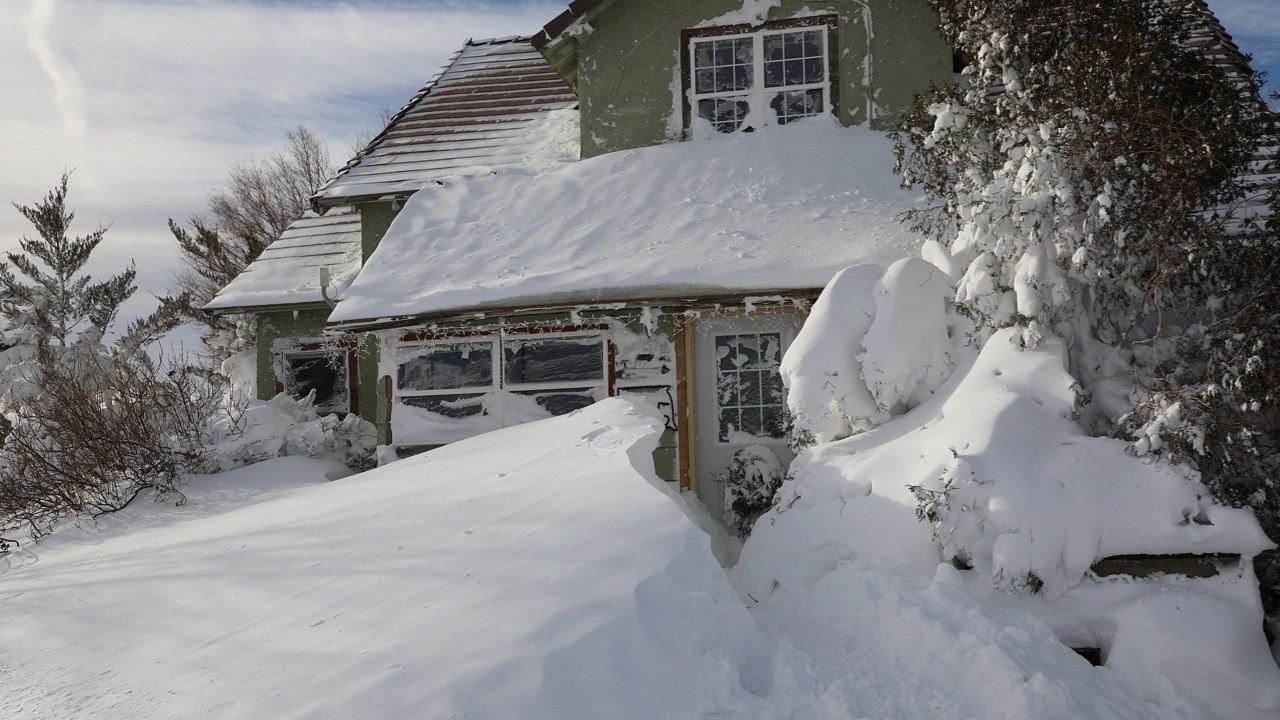
A house covered with snow in United States.
Credit: Reuters Photo
At least 70 people across the United States died from weather-related causes after more than a week of frigid winter storms and brutally cold temperatures, according to reports from state officials, police departments, medical examiners and news outlets.
The number is likely to grow as authorities scramble to assess the death toll from the bitter chill, frozen roads and high winds, especially in parts of the country unused to extended bouts of a deep freeze.
Last Monday in Tennessee, a man died after he fell through a skylight while clearing snow from the roof of a business.
On Tuesday in Pennsylvania, five women from the same family were killed in a collision with a tractor-trailer, just moments after they had convened on the side of a snowy highway following a separate accident.
And on Wednesday in Oregon, a tree branch, weakened by wind and ice, took down a live power line that killed two adults and a teenager.
Tennessee suffered a particularly high number of fatalities. At least 25 people there appear to have died of weather-related causes, including hypothermia, falls and traffic accidents, according to state health officials. And in Oregon, at least 11 people are reported to have died of weather-related causes, including the three who were killed by the power line. Both states declared a state of emergency last week, as did Kentucky, where at least five people died during the cold snap.
"Everyone, please take time today to check on your family, friends and co-workers and make sure they have what they need to stay safe and warm," Kentucky Gov. Andy Beshear said in a statement Friday.
Traffic accidents -- often caused by cars spinning out of control on icy, snowy roads -- are among the most common causes of death during cold snaps. Hypothermia is another threat, especially for people who do not have access to shelter or heat. And downed power lines can raise the risk of fire or electrocution.
But cold-weather fatalities are difficult to count. The causes of death vary widely, and it can take time for authorities to pinpoint the exact circumstances of a traffic accident, a heart attack or a fall.
Weather across the country remained frigid Sunday, with Nashville, Tennessee, hitting a low of 3 degrees. Parts of Texas had temperatures in the 30s on Sunday, and Chicago and Milwaukee saw temperatures in the teens.
But the freeze promises to break beginning Monday. Temperatures are expected to rise across the country, hitting above-average levels in many places, said Bob Oravec, a lead forecaster with the National Weather Service in Maryland.
Instead of cold and snow, many areas could see heavy rains, including eastern Texas into the lower Mississippi Valley, which includes Louisiana, Arkansas and Tennessee. The West Coast will also have wet weather conditions.
California is expecting heavy rain and snow in the Sierra Nevada.
People tend to underestimate the risks of extreme temperatures, said James Marshall Shepherd, a weather and climate expert at the University of Georgia. But cold snaps like the one that swept the country this month are often deadlier than hurricanes, tornadoes and other comparatively dramatic weather events.
People in the South, Shepherd said, can be especially vulnerable to extreme weather, particularly in low-income areas, and ones that are densely populated or unaccustomed to the cold.
During summer heat waves, which have become hotter than they used to be, many people in the South feel at least somewhat acclimated, Shepherd said. But decades-old infrastructure that is common in Southern states is often ill-suited to the kind of icy weather much of the region has experienced over the past week. He added that many residents may not have the necessary resources -- such as reliable heat or warm clothes -- to stay safe.
"When everyone else gets a cold," he added, "we get the flu."
This article originally appeared in The New York Times.